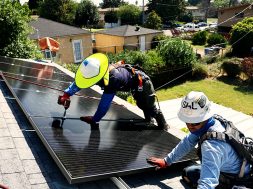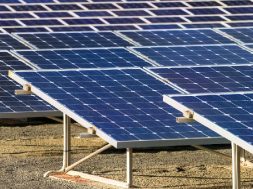
‘Enough solar and storage systems can get buildings off grid’
THIRUVANANTHAPURAM: Introduction of micro-inverters marks one of the biggest technology shifts in the solar PV industry where central inverters have ruled the roost. One central inverter would normally cover an entire residential solar system. Micro-inverters, on the other hand, sit on the back of each and every solar panel. Manufacturers claim 5-25 per cent increase in power output, which in the long run can bring in a lot in savings for homeowners.
The US-based Enphase Energy, a Nasdaq-listed energy technology company, has shipped approximately 16 million micro-inverters. More than seven lakh Enphase systems have been deployed in more than 100 countries. It has recently opened in Bengaluru a ‘centre of excellence’ for software, hardware, supply chain, strategic sourcing, product management, and customer service.
Dave Ranhoff, Vice-President and Chief Commercial Officer, spoke to BusinessLine on trends in solar technology applications and advancements in storage systems.
Some optimistic users see a future where they install enough solar capacity and enough storage to get off the grid. Is this realisable? If yes, how soon?
Advancements in solar technology is not limited to standard equipment as new and more efficient solar panels and inverter are under way. To answer your question, yes, enough solar and storage systems can get buildings completely off-grid. Moreover, energy storage is now moving towards mass market adoption, becoming a choice for regular homeowners.
The following are major factors that are driving this transformation. Solar and battery storage systems are becoming less expensive. There are some markets where excess energy is being generated during the day and hence the feed-in-tariff is reduced or going away. Availability of bi-directional meters is also a challenge in many states with a net-metering policy. Large parts of India still don’t have reliable grid availability, and off-grid solutions hold promise.
However, there are a few things that system owners need to consider before going off-grid. Getting to 95 per cent power supply reliability may be possible, but 100 per cent means ability to power loads even during winter days or low sunlight days. That will require over-sizing of the systems and hence may not be financially beneficial. In cities, available roof size may be another limiting factor. Hence, a hybrid solution of self-generated power and the grid may be the right solution.
How has Tesla’ Powerwall revolutionised the home energy storage solutions? Are plug-and-play versions any competition?
Enphase AC Batteries compete head to head with Tesla’s Powerwall in markets like Australia now. In terms of ease of handling and installation, here is how it compares. The Tesla battery weighs around 100 kg, while Enphase battery is around 20 kg each. So, Enphase is clearly a winner in terms of problems associated with heavy lifting.
With an Enphase AC Battery system, the first battery can be installed in two hours, while the additional units are just plug and play. This is ideally suited when you want to start with a small kWh and play with the powerful software that will help you to monitor and control the usage. The small and modular system enables you to quickly add more kWh easily. Enphase AC Batteries allow consumers to scale up with availability of funds – start small and grow with requirement.
Micro-inverters are said to be costly and prone to failure because of their sheer numbers and location in harsh rooftop conditions. Your views?
Enphase micro-inverters have been engineered and tested to function in the harshest environments expected in a PV installation. We have systems operating in some of the harshest conditions on the planet, from Saudi Arabia to Antarctica. We monitor these systems in real time through our Enlighten software platform. We know exactly how our micro-inverters and the systems they power are running, and what conditions they are being subjected to. From the outset, they generate less heat than string inverters because they have no moving parts and they process about 10 per cent of the voltage that string inverters do.
Each system contains multiple micro-inverters and has a distributed architecture, which means no central, single point-of-failure, inherently leading to a more reliable system. Enphase micro-inverters are designed and built to stand up to extreme conditions. We test extensively at the component level and our environmental stress tests can run more than a year. We then do the unit-level testing. Between the two test phases, we literally test thousands of units under high environmental stress conditions (extreme humidity and temperature, etc.) before a product is brought to market.
Does your home energy solutions offering also involve green building consulting options?
Currently we are engaging with partners exploring options. A prime factor behind this is that the industry is also favourable, because:
With the electricity demand reaching 8,00,000 MW in 2032, India is going to need at least 1,50,000 MW of solar power capacities to sustain its growth.
Climate change is a reality and if people are aware of the benefits of building green, they are able to reduce their carbon footprint.
Energy efficiency and sustainability can be incorporated into home design as they are high performing and smart in the use of energy and serves well for the health of its inhabitants.
Affordable and sustainable development practices are the way to go and we are already exploring these options with our partners and third party vendors.
















